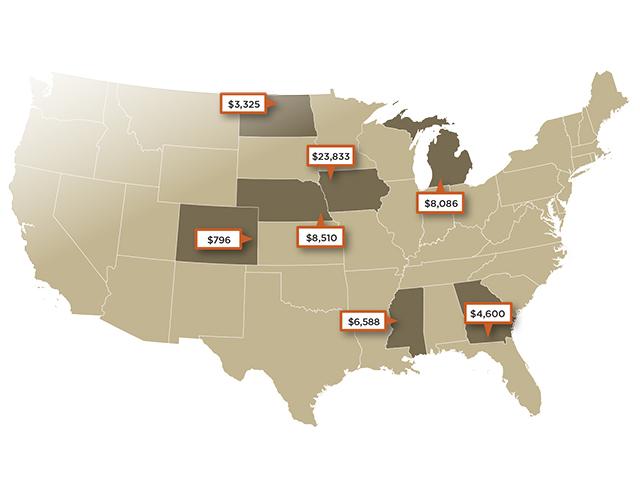DTN Oil
Brent Tops $98 as OPEC Cuts Fuel Concern Over Tight Supply
WASHINGTON (DTN) -- Oil futures nearest delivery on the New York Mercantile Exchange and Brent crude traded on the Intercontinental Exchange extended their rally into a fifth consecutive session Friday, with both benchmarks finishing the first week of October 5% higher.
The gains were underpinned by a two-fold supply risk in Russia after Moscow threatened to cut all oil exports to any country that participates in a G-7 initiative to cap the price of Russian energy sales, and steep production cuts from the OPEC+ that defied calls from the Biden administration to ease pressure on the tight global oil market.
Oil futures only briefly pared gains earlier in the session on the back of a strengthening U.S. dollar following the September employment report that solidified the case for a 75-basis-point rate hike at the Federal Reserve meeting next month. The U.S. economy added 263,000 new jobs last month -- broadly in line with market's expectations, but the overall unemployment rate surprisingly fell back to pre-pandemic February 2020 low of 3.5%. The decline in the jobless rate last month came as labor force participation fell slightly to 62.3% -- a sign of ample demand for workers even amid growing fears of recession. Even as the labor market shows some signs of cooling, it is yet to reflect the broader slowdown in other sectors of the economy.
P[L1] D[0x0] M[300x250] OOP[F] ADUNIT[] T[]
For instance, business activity in the U.S. manufacturing sector barely missed contraction territory in September, according to the data from the Institute of Supply Management, with renewed weakness led by the sharp decline in new orders. After a single month of expansion, the employment index in the manufacturing economy, contracted again to 48.7%, more than 5% lower compared to August. "Concerns of global economic slowdown are growing, and we are experiencing some customers pulling back orders," said a representative from the Chemical Products industry.
Underpinning gains in the oil complex are ongoing uncertainty surrounding the G-7 plan to cap the price of Russian oil exports that is expected to be finalized sometime before the E.U. embargo goes into full effect on Dec. 5. The potential complexity of the U.S.-led measure and lack of clarity over how it will be implemented risks pushing more Russian oil off the market than most experts currently expect, according to the world's biggest independent oil trader, Vitol. The idea behind the price cap is that it should be applied as globally as possible to restrict the Kremlin's revenues. Theoretically, the measure will also affect all exports of Russian oil to large Asian buyers, including China and India.
According to the European Commission, the exact price floor has yet to be determined. However, preliminary estimates suggest that the price should be above the breakeven level for the Russian producers but considerably below the current market rate and closer to what Russia was getting paid before invading Ukraine. Following the announcement, Russian Deputy Prime Minister Alexander Novak said moves to cap the price of his country's oil will backfire and could lead to a temporary reduction in its oil output.
Additionally, OPEC+ this week agreed to cut its collective oil production by 2 million barrels per day (bpd) for the month of November -- the largest output reduction since April 2020 when producers were forced to slam the breaks on output in light of collapsing demand. Most of the announced 2 million bpd production cut would fall on the shoulders of five OPEC+ producers, led by Saudi Arabia and Russia, that would equally reduce crude output by 526,000 bpd. Iraq agreed to cut output by 220,000 bpd, the United Arab Emirates by 160,000 bpd, and Kuwait by 135,000 bpd. It is notable that OPEC+ members have been producing far below their official target levels for months now. In August, OPEC+ underproduced against their quota by 3.4 million bpd, meaning the volume that would be removed from the market in November would be smaller than 2 million bpd. Still, even a cut in the ballpark of 700,000 to 1 million bpd could considerably tighten the physical oil market.
At settlement, November WTI futures advanced $4.19 to $92.64 per barrel (bbl), and ICE Brent futures for December delivery rallied to $97.92 per bbl, up by $3.50 in afternoon trading. NYMEX November RBOB futures added 5.32 cents to $2.7346 per gallon, and front-month ULSD futures surged 15.38 cents to $4.0187 per gallon.
Liubov Georges can be reached at liubov.georges@dtn.com
Liubov Georges can be reached at liubov.georges@dtn.com



